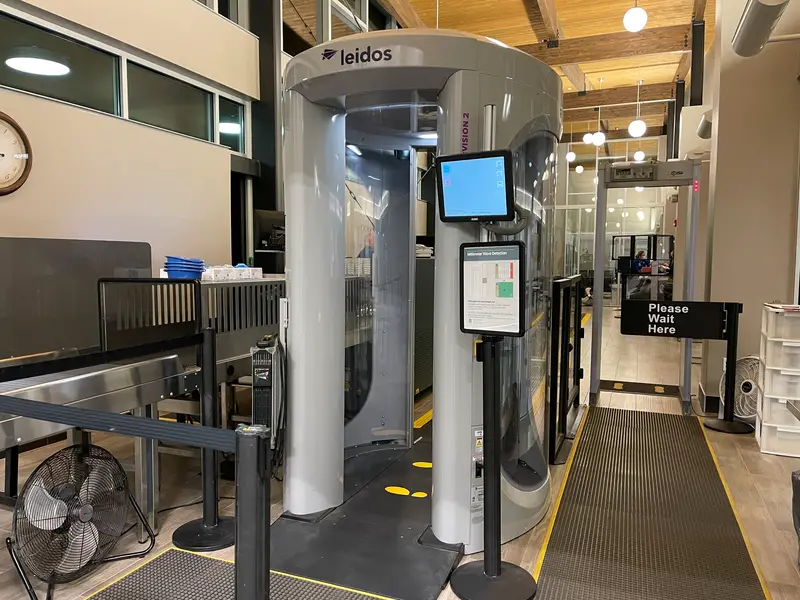As millions of travelers pass through airport security checkpoints daily, a silent technological sentinel stands guard: the full-body scanner. These devices, now present in 172 airports across the United States, represent a significant advancement in security screening. But what’s really happening when you step into that futuristic-looking booth?
Understanding the two types of scanning technology
Airport security employs two primary types of body scanning systems. The first, millimeter wave scanners, uses low-level radio waves to create a 3D image of passengers. The second type, backscatter X-ray scanners, employs low-dose X-rays to generate detailed body images.
Modern U.S. airports predominantly use millimeter wave technology, which operates using two rotating antennas that move around your body. These scanners produce what resembles a fuzzy photo negative, which security personnel view on a remote monitor.
Radiation exposure facts versus fiction
The mention of radiation often triggers immediate concern, but the reality might surprise you. Millimeter wave scanners emit non-ionizing radiation at levels thousands of times lower than a cell phone. Even the older backscatter X-ray systems expose passengers to minimal radiation – equivalent to just 3-9 minutes of natural background radiation.
To put this in perspective, you receive more radiation exposure during your actual flight than from these security screenings. A cross-country flight subjects passengers to more radiation than hundreds of security scans combined.
Safety measures and regulatory oversight
The Transportation Security Administration (TSA) operates under strict guidelines set by the FDA’s Center for Devices and Radiological Health. Each scanner undergoes regular testing and maintenance to ensure compliance with federal safety standards.
Independent scientists from the Health Physics Society continuously research and monitor these systems. Their findings consistently support the safety of current scanning technologies for both passengers and operators.
Privacy considerations and alternatives
Modern scanners incorporate sophisticated privacy protection features. Images appear as generic outlines, with faces blurred and personal features obscured. TSA agents viewing these images work from remote locations, separated from the screening area.
Passengers maintaining privacy concerns retain the right to request alternative screening methods. A manual pat-down serves as the standard alternative, though this process typically takes longer than the scanner.
Risk assessment for frequent flyers
Scientists estimate that among 750 million annual passenger screenings, these scanners might theoretically contribute to six additional cancer cases over the entire population’s lifetime. For perspective, this represents an incredibly small fraction compared to the natural cancer rate.
Even frequent flyers face minimal risk. Studies indicate that for every million frequent flyers, only four additional cancer cases might occur – and these estimates assume using the older, higher-radiation backscatter technology rather than current millimeter wave systems.
Airport body scanners represent a careful balance between security necessity and public safety. While no screening method is perfect, current evidence strongly suggests these systems pose minimal health risks while providing valuable security benefits. The next time you step into an airport scanner, remember: you’ll receive more radiation from the flight itself than from those few seconds of screening.

